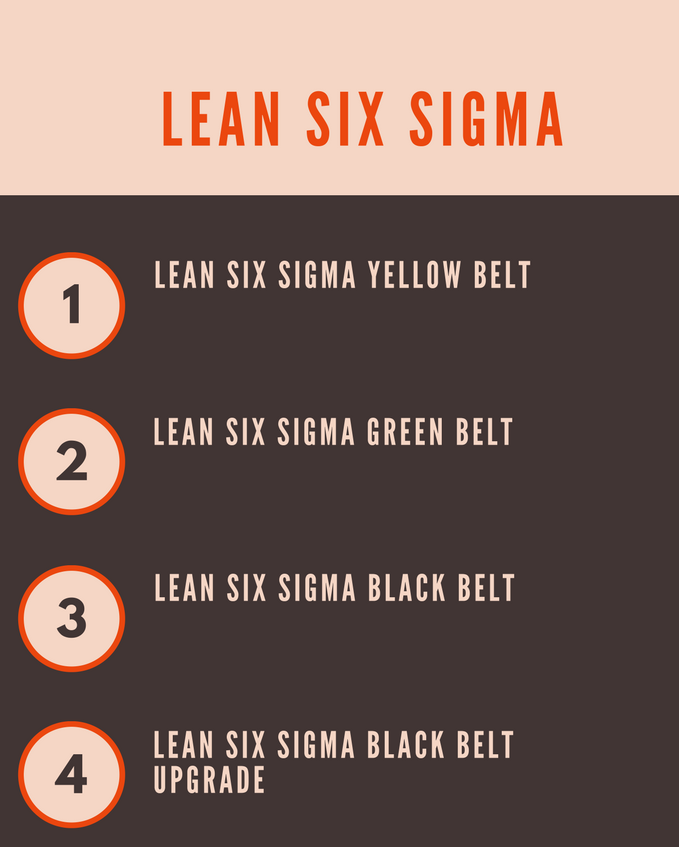Course Content
- Define Phase
- The Basics of Six Sigma
- Meanings of Six Sigma
- General History of Six Sigma & Continuous Improvement
- Deliverables of a Lean Six Sigma Project
- The Problem Solving Strategy Y = f(x)
- Voice of the Customer, Business and Employee
- Six Sigma Roles & Responsibilities
- The Fundamentals of Six Sigma
- Defining a Process
- Serious Quality Characteristics (CTQ’s)
- Poor Quality Cost
- The Pareto Analysis (80:20 rule)
- Six Sigma - Measurement Standards
- Selecting Lean Six Sigma Projects
- Building a Business Case & Project Charter
- Developing Project Metrics
- Financial Evaluation & Benefits Capture
- Understanding The Lean Enterprise
- Lean – An Understanding and its History
- The Combination of Lean & Six Sigma
- The Seven Waste Elements
- 5S
- Straighten, Shine, Standardise, Self-Discipline, Sort
- The Basics of Six Sigma
- Measure Phase
- Process Definition
- Cause & Effect / Fishbone Diagrams
- Process Mapping, SIPOC, Value Stream Map
- X-Y Diagram
- Failure Modes & Effects Analysis (FMEA)
- Six Sigma Statistics
- Basic Statistics
- Descriptive Statistics
- Normal Distributions & Normality
- Graphical Analysis
- Measurement System Analysis
- Precision & Accuracy
- Bias, Linearity & Stability
- Gage Repeatability & Reproducibility
- Variable & Attribute MSA
- Process Capability
- Capability Analysis
- Concept of Stability
- Attribute & Discrete Capability
- Monitoring Techniques
- Process Definition
- Analyze Phase
- Patterns of Variation
- Multi-Vari Analysis
- Classes of Distributions
- Inferential Statistics
- Understanding Inference
- Sampling Techniques & Uses
- Central Limit Theorem
- Hypothesis Testing
- General Concepts & Goals of Hypothesis Testing
- Significance; Practical vs. Statistical
- Risk; Alpha & Beta
- Types of Hypothesis Test
- Hypothesis Testing with Normal Data
- 1 & 2 sample t-tests
- 1 sample variance
- One Way ANOVA
- Hypothesis Testing with Non-Normal Data
- Mann-Whitney
- Kruskal-Wallis
- Mood’s Median
- Friedman
- 1 Sample Sign
- 1 Sample Wilcoxon
- One and Two Sample Proportion
- Chi-Squared (Contingency Tables)
- Patterns of Variation
- Improve Phase
- Simple Linear Regression
- Correlation
- Regression Equations
- Residuals Analysis
- Multiple Regression Analysis
- Non- Linear Regression
- Multiple Linear Regression
- Confidence & Prediction Intervals
- Residuals Analysis
- Data Transformation, Box-Cox
- Designed Experiments
- Experiment Objectives
- Experimental Methods
- Experiment Design Considerations
- Full Factorial Experiments
- 2k Full Factorial Designs
- Linear & Quadratic Mathematical Models
- Balanced & Orthogonal Designs
- Fit, Diagnose Model and Center Points
- Fractional Factorial Experiments
- Designs
- Confounding Effects
- Experimental Resolution
- Simple Linear Regression
- Control Phase
- Lean Controls
- Control Methods for 5S
- Kanban
- Poka-Yoke (Mistake Proofing)
- Statistical Process Control (SPC)
- Data Collection for SPC
- I-MR Chart
- Xbar-R Chart
- U Chart
- P Chart
- NP Chart
- Xbar-S Chart
- CumSum Chart
- EWMA Chart
- Control Methods
- Control Chart Anatomy
- Subgroups, Impact of Variation, Frequency of Sampling
- Center Line & Control Limit Calculations
- Six Sigma Control Plans
- Cost Benefit Analysis
- Elements of the Control Plan
- Elements of the Response Plan
- Lean Controls

 ENQUIRE
ENQUIRE
 REQUEST CALLBACK
REQUEST CALLBACK
 GET A FREE QUOTE
GET A FREE QUOTE


 Introduction
Introduction Course Details
Course Details Course Content
Course Content





 London
London